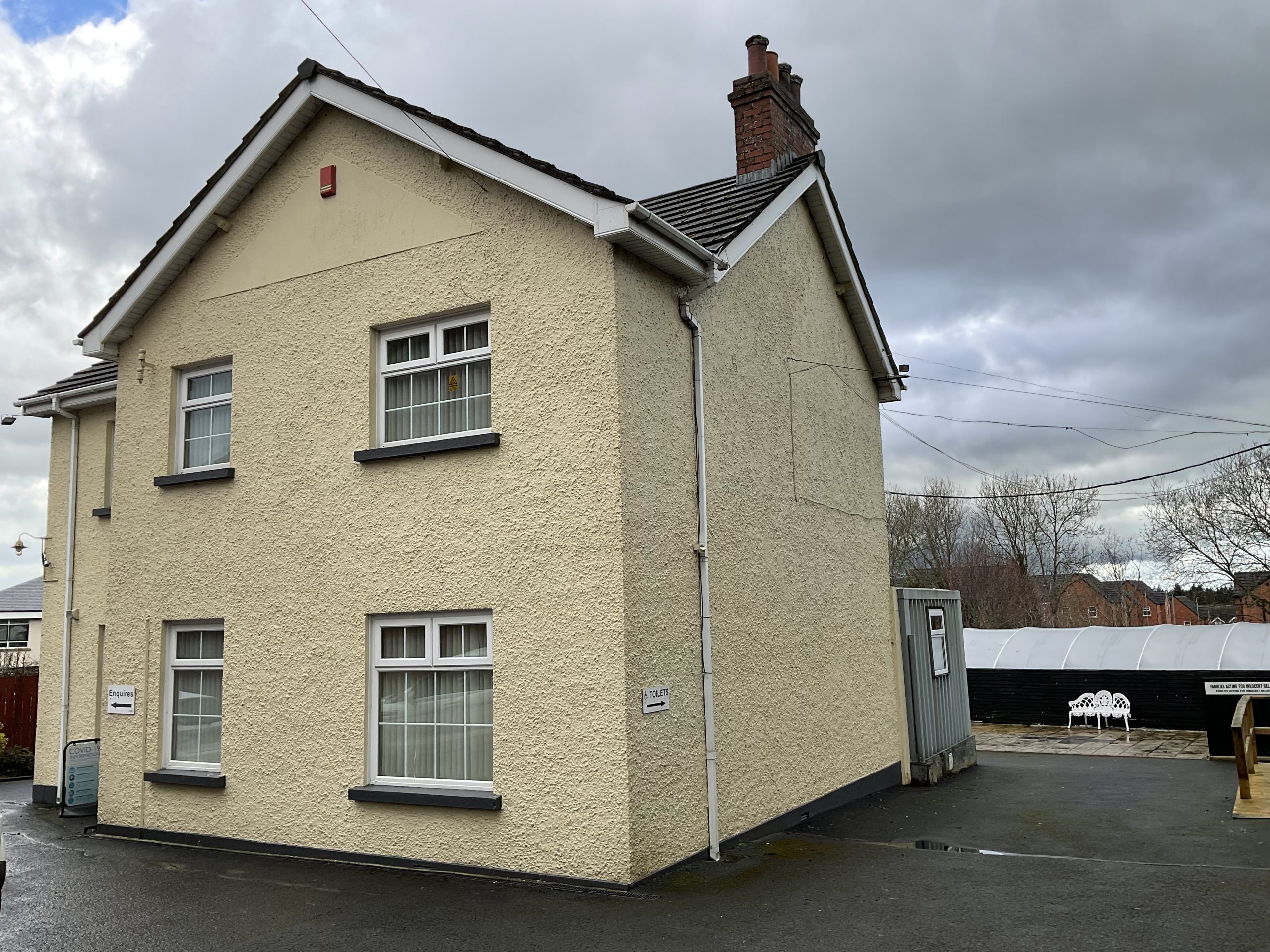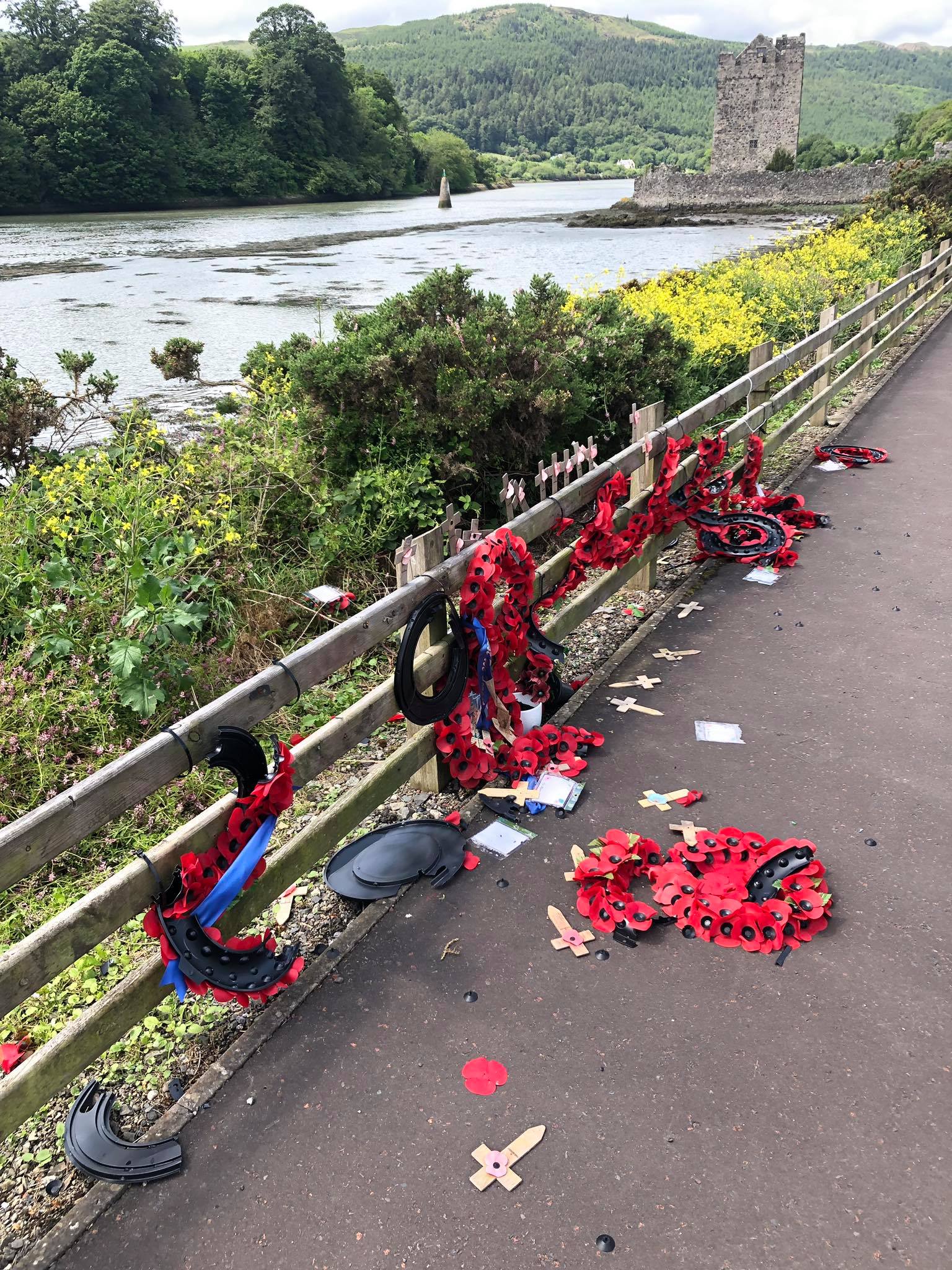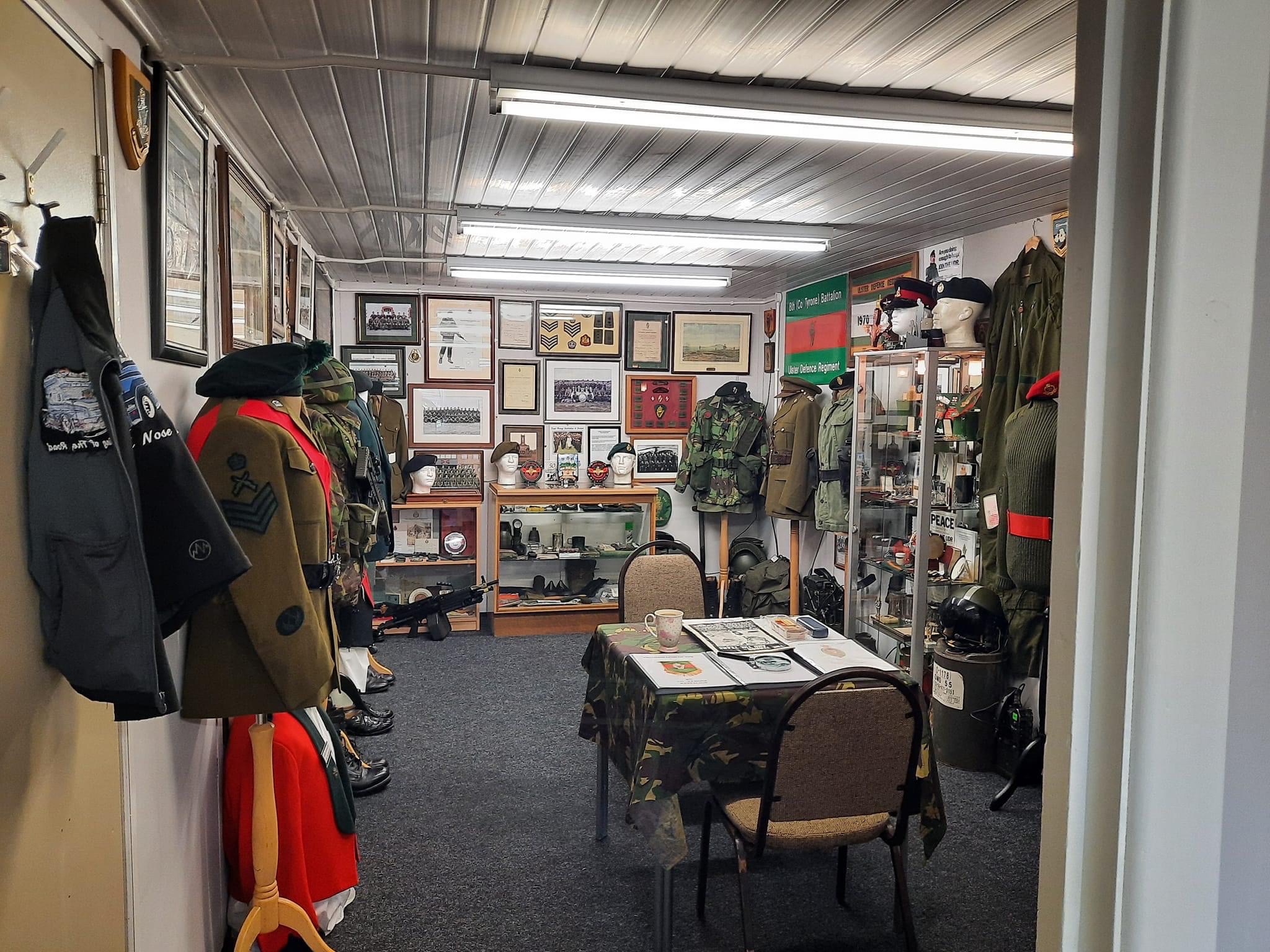Living Memorial Centre Development
AS FAIR marks its 25th Anniversary they have launched an exciting new Living Memorial Centre Development project. Over 15 years ago the group secured premises in Markethill. In what was the school masters house the group developed the first phase of their Living Memorial centre with a reception and administrative hub, meeting room and multi-purpose space, with kitchen. On the first floor an IT suite, and officers were developed. A memorial garden with a marble memorial funded and designed by friends and supporters on the mainland became the centrepiece with a place for victims to reflect and remember.

The group quickly outgrew the building and as new projects and activities were launched a number of temporary offices were placed on site. Over the last decade the group continued to develop the main building with an extended kitchen and disabled access toilets and storage. However as FAIR looked to its first quarter century one of the key priorities was a major development project to modernise and make their centre fit for the future. As members views were canvassed and professional advice Slough the project took shape with a range of new facilities and multiple-purpose spaces envisaged.
Meetings have already begun with the design team and the committee is turning its attention to fundraising. The ambitious target of £250,000 has been set - £10,000 for every year that FAIR has been in existence. The vision for the centre as a 'living memorial' remains strong and guides the group. It see the centre as a place of safety and support. FAIR has developed their facility at Mount Pleasant House as
An accessible, safe, friendly supportive and well resourced facility where victims can—
-
Remember loved ones they have lost as a result of the past thirty years of terrorism.
-
Meet and share within a social setting where they can share their experiences
-
Access professional services to help them deal with their physical and mental trauma,
-
Develop the skills, confidence and capacity needed to move on with their lives,
-
Receive the support, advocacy and care they deserve from the group they created
-
Deal with the Past and provide their interpretation of it in a positive way
-
Reintegrate into the community forming practical partnerships that benefit all
-
Become a valued group in society playing a full role in building lasting, genuine peace
FAIR Condemns Memorial Attack
A MARKETHILL-based victims’ group has condemned the vandalism of memorial poppy wreaths at the Narrow Water site where 16 Paratroopers and two Queen’s Own Highlanders were murdered by the IRA in 1979.

Each year, Families Acting for Innocent Relatives (FAIR) organises a memorial service at the site which enables victims and ex-service to pay tribute to the great loss of life and to ensure the soldiers’ families on mainland Britain know that “we remember them”.
FAIR project manager, Molly Carson MBE, said” it was a heavy loss of life of brave soldiers whilst carrying out a peace keeping mission to oppose violence in Northern Ireland”.
“The IRA carried out this atrocity in their usual cowardly fashion, laying their bombs at darkness whilst taking up positions in the South of Ireland, which has always protected them from trial in the North,” she said.
It is clear to see that those who carried out the damage to the memorial wreaths still have hatred and evil in their hearts.
“Their propaganda machine tries to tell the British Government they want a united Ireland and it will be a shared space? I think their actions speak volumes and any decent man or woman in this country should condemn the behaviour which occurred last weekend.
“A mother of a young soldier, placed her wreath securely on that fence whilst she remembered him growing up, when he left home, the last time they spoke, that lady was heartbroken with pain for the loss of her dear son.
“How will this lady feel when she hears that someone filled with hate, who did not even know her son, had destroyed her tribute of remembrance on her first visit to the Province?
“What will be the lasting memory of this family and others present at the Memorial Service?
“FAIR have replaced their wreath of Remembrance and thank-you to those who replaced the others.
“I hope that the Police Service of Northern Ireland will bring those responsible to justice and would ask if anyone saw anything or the registration of a vehicle at the scene late at night to contact the police.
“We will remember them.”
Service and Supreme Sacrifice
For over 30 years the brave men and women of the UDR defended Northern Ireland from Irish Terrorists namely the IRA. Today they are in Iraq and Afghanistan.
RIR the Royal Irish Regiment formerly the UDR, Ulster Defence Regiment
The Ulster Defence Regiment (UDR) was an infantry regiment of the British Army. It was a locally raised, part time and full time unit, intended to carry out security duties within Northern Ireland. It was amalgamated in 1992 with the Royal Irish Rangers, forming the Royal Irish Regiment (27th (Inniskilling) 83rd and 87th and Ulster Defence Regiment).

Birth of the Regiment
The birth of the Regiment was a result of the civil unrest of the late 1960s which had threatened to overwhelm the Royal Ulster Constabulary and which had led to the deployment of Regular Army units to assist the police. In 1969 the Hunt Report recommended the disbandment of the Ulster Special Constabulary and its replacement by a reserve element of the RUC and a locally-recruited part-time force, The Ulster Defence Regiment.
7 Battalions
Initially the Regiment had seven battalions: 1st (Co Antrim); 2nd (Co Armagh); 3rd (Co Down); 4th (Co Fermanagh); 5th (Co Londonderry); 6th (Co Tyrone) and 7th (City of Belfast). The UDR achieved the remarkable distinction of carrying out its first operational duties on the day on which it was formed, 1 April 1970.
1972
In 1972 four additional battalions were added to the Regiment's strength: these were 8th (Co Tyrone); 9th (Co Antrim); 10th (City of Belfast) and 11th (Craigavon) Battalions. By the end of 1972 the complement of The Ulster Defence Regiment had reached 9,200, its greatest strength. The regiment had been "called out" for periods of full-time service to meet operational requirements, including Operation Motorman in 1972.
Greenfinches
The following year, 1973, saw the introduction of female soldiers to the Regiment to carry out searching of females. From the beginning women were fully integrated, wearing the Ulster Defence Regiment's cap badge in which respect the Regiment was almost twenty years ahead of the rest of the Army. The women soldiers quickly became known as Greenfinches, a popular nickname which has stuck down through the years. More importantly, they played a vital part in the Regiment's operational role.

Operational Effeciency
From its earliest days, when patrols sometimes deployed in private cars and patrol commanders had to report in from telephone kiosks because of the inadequate range of the first radios, the Regiment rapidly increased its operational efficiency to the point where it was able to assume tactical responsibility for 85 per cent of Northern Ireland as the first line of support for the Royal Ulster Constabulary. As a result, the number of full-time soldiers also increased and by 1980 full-timers were in the majority.
Expertise
The Regiment had its own training establishment at Ballykinler which became its Depot and provided further training for the Regiment's soldiers in a range of skills. All ranks also began attending Regular Army courses at the Schools of Infantry, Intelligence and Military Engineering. As soldiers of the Ulster Defence Regiment concentrated on the internal security role the Regiment built up an expertise in such duties that remains unrivalled throughout the Army. Links were also created with the Army's administrative divisions which provided key personnel, including commanding officers, for their affiliated UDR battalions. Short tours with UDR battalions were also offered to officers throughout the Army.
Reductions
Further improvements in operational efficiency heralded a reduction in the number of battalions; in 1984, there were amalgamations in Antrim and Belfast to create 1st/9th (Co Antrim) and 7th/10th (City of Belfast) Battalions. The Regiment retained nine battalions until 1991 when 2 UDR and 11 UDR amalgamated as 2nd/11th Battalion, The Ulster Defence Regiment, and 4 and 6 UDR became 4th/6th Battalion.
Presentation of Colours
In 1991 the Regiment came of age: twenty-one years after formation, Colours were presented to four battalions at Lisburn by Her Majesty The Queen. This was a singular honour since it is rare that the Sovereign personally presents Colours, except to the Household Division. The remaining battalions received their Colours before The Ulster Defence Regiment became part of The Royal Irish Regiment.
Freedoms
The City of Belfast and a number of boroughs throughout Northern Ireland paid their own tribute to the Regiment by granting Freedoms while the community relations work of 7th/10th (City of Belfast) Battalion was recognised by the award of the Wilkinson Sword of Peace for 1990.

Today the RIR Ulstermen are in Afghanistan
A Heavy Price Paid for Peace
The price paid by The Ulster Defence Regiment was high: 197 soldiers were killed, the majority were off-duty, and a further 60 were killed after they had left the UDR. On the Regimental Roll of Honour the first name is that of Private Winston Donnell of 6 UDR, shot dead at a vehicle checkpoint near Clady, County Tyrone, on 9 August 1971. The Regiment had been called out following the introduction of internment that day.
Murdered
The men, and women, of the Regiment were not safe anywhere, nor at any time: more personnel were murdered while off duty, either at home or in the course of their civilian employment, than lost their lives in uniform. Even those who had left the Regiment did not always find safety; forty-seven former soldiers have been murdered after ceasing to be UDR personnel. Others, especially in the Fermanagh border area, were forced to move to safer areas and had to sell their homes and, sometimes, their land as a result of imminent terrorist threat.



